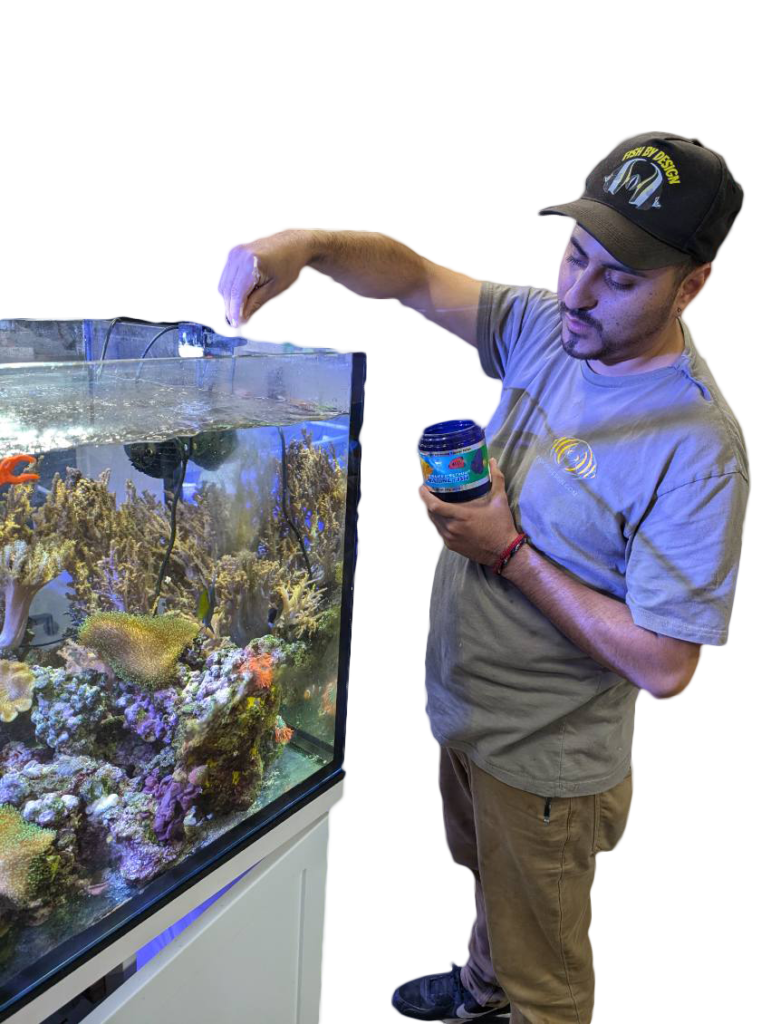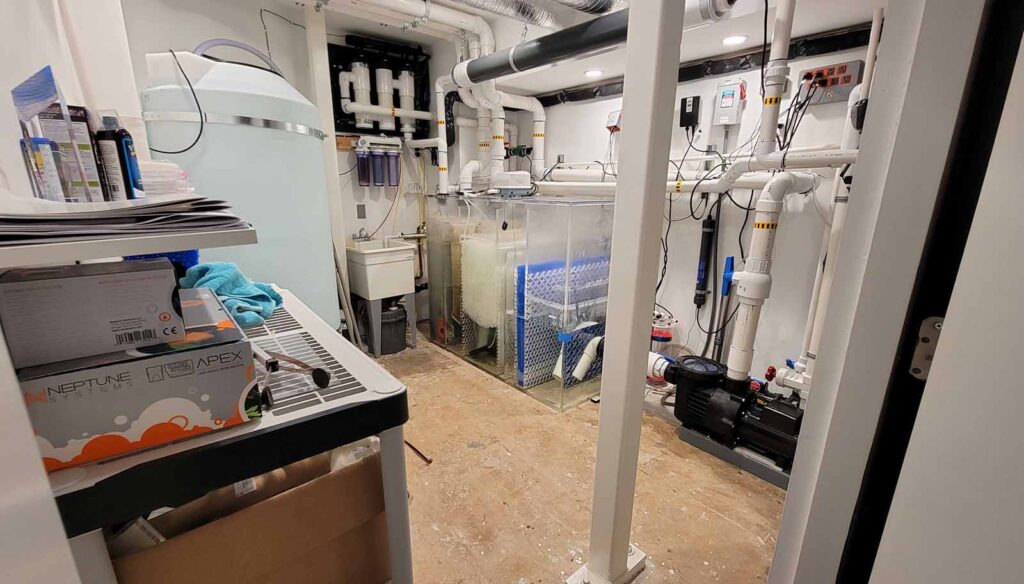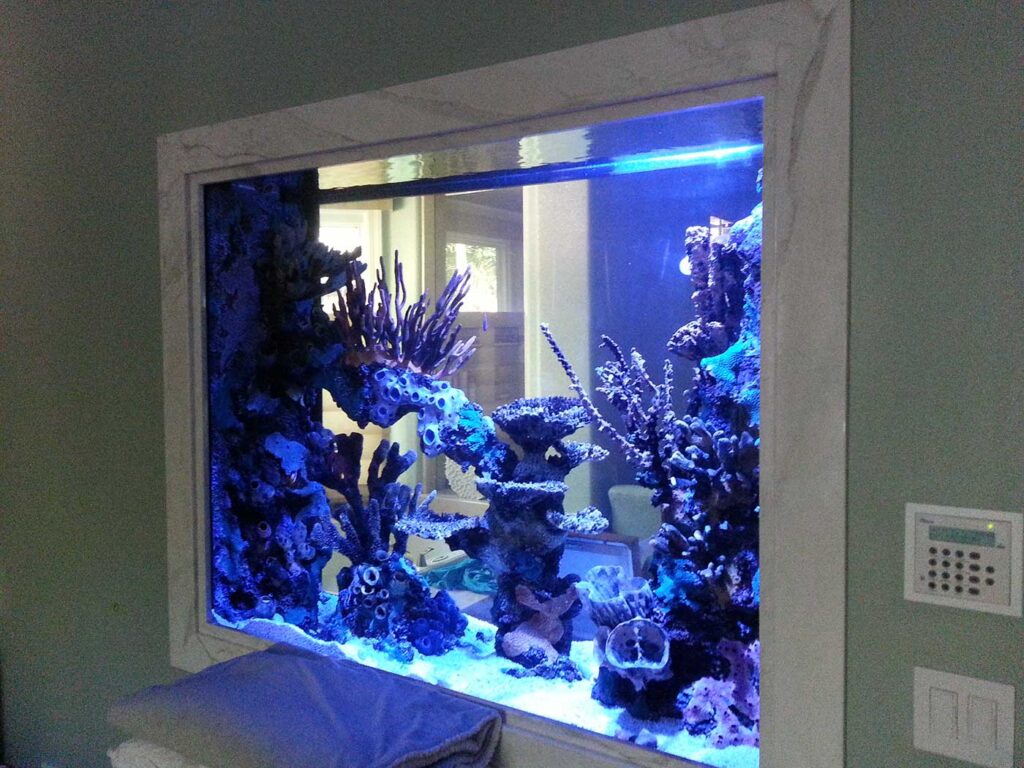The Perils of Overfeeding: A Guide to Aquarium Health
Introduction to Aquarium Health
Maintaining a balanced and healthy aquarium can be both rewarding and challenging for enthusiasts. One of the most common mistakes aquarists make is overfeeding. While it’s important to feed your fish and other aquatic creatures, giving them too much food can lead to serious health issues, not just for the fish but for the entire aquarium environment as well. Whether you have a freshwater tank or a saltwater reef tank, it’s essential to understand the consequences of overfeeding and how to prevent it to ensure the well-being of your aquatic pets.

Understanding Overfeeding in Aquariums
Overfeeding happens when fish receive more food than they can eat in a reasonable amount of time. This is a common error made by well-meaning aquarium owners who want to make sure their fish are well-fed. However, many don’t realize that excess food often sinks to the bottom of the tank, where it decomposes. This decomposition releases harmful substances into the water, creating a toxic environment for fish and other aquatic life. Being able to recognize the signs of overfeeding and taking steps to prevent it can help avoid many problems in your aquarium.
The Consequences of Overfeeding
The consequences of overfeeding go well beyond just having leftover food in the tank. It can trigger a series of negative effects, including poor water quality and the growth of harmful organisms. In the short term, you might observe cloudy water or an unpleasant smell coming from the tank. Over time, this can lead to weakened fish health, increased maintenance demands, and even the potential collapse of the tank’s ecosystem. Recognizing these risks is crucial for keeping a healthy aquarium.
The Ammonia Spike
The ammonia spike is a significant concern. Ammonia is a colorless gas that poses a serious threat to fish and other aquatic life. It forms naturally in the aquarium as organic matter, like uneaten food and fish waste, breaks down. When fish are overfed, the surplus food that settles at the bottom decomposes quickly, causing ammonia levels to surge. This sudden spike can be deadly for fish, as it disrupts their oxygen absorption, leading to signs like rapid gill movement, lethargy, and a decrease in appetite.
In a well-balanced aquarium, beneficial bacteria convert ammonia into less harmful compounds such as nitrites and nitrates. However, when overfeeding occurs, these bacteria struggle to keep pace with the excess ammonia, creating toxic conditions. To avoid ammonia spikes, it’s essential to feed fish only what they can eat in a few minutes and to promptly remove any leftover food.
Nutrient Imbalances in Aquariums

Algae Blooms
Algae blooms are a prominent and frustrating result of overfeeding. As nitrates and phosphates build up in the water, they create a perfect setting for algae to flourish. Various types of algae, including green algae, brown algae (diatoms), and blue-green algae (cyanobacteria), can quickly dominate the tank, covering the glass, substrate, and decorations. This not only makes the tank look unattractive but can also obstruct light from reaching plants and corals, hindering photosynthesis and causing their decline.
To manage algae blooms, it’s vital to regulate nutrient levels through appropriate feeding practices, regular water changes, and if needed, the use of algae-controlling products. Additionally, maintaining a proper balance of light and nutrients is essential to prevent excessive algae growth.
The Role of Bacteria and Parasites
The impact of overfeeding on bacteria and parasites in your aquarium is significant. When fish are given too much food, it can lead to an increase in harmful bacteria, which may result in diseases like fin rot and bacterial infections. Additionally, overfeeding creates a favorable environment for parasites, such as ich (white spot disease), which can lead to rapid outbreaks that threaten the health of your entire fish population.
To prevent these bacterial and parasitic issues, it’s essential to maintain good water quality by feeding appropriately, regularly cleaning the tank, and closely monitoring your fish’s health. If an outbreak does occur, it’s crucial to act quickly with the right medications to stop it from spreading further.

Impact of Overfeeding on Freshwater Tanks
The impact of overfeeding on freshwater tanks can be significant. When excess food decomposes, it releases nutrients that promote the growth of various algae types, such as green water algae, hair algae, and black beard algae, which can be tough to manage. Overfeeding also increases organic waste, resulting in cloudy water and unpleasant smells. Moreover, the buildup of waste and leftover food can foster harmful bacteria, complicating the maintenance of a stable and healthy environment for your fish.
To tackle these problems, freshwater aquarium owners should aim to feed their fish in moderation and promptly remove any uneaten food. Regular water changes and effective filtration systems can also help control nutrient levels.

Impact of Overfeeding on Reef Tanks
The effects of overfeeding on reef tanks are particularly concerning. These tanks, which support sensitive corals and invertebrates, require excellent water conditions. Excess nutrients can lead to the proliferation of nuisance algae that can smother corals and compete for light and space. Elevated nutrient levels may also encourage the growth of brown-diatom algae, which can cover coral surfaces and hinder their growth.
To avoid these complications, reef tank owners need to be cautious with feeding, providing food in small portions and quickly removing any uneaten leftovers. Additionally, using a protein skimmer can be very effective in maintaining water quality by removing organic matter before it decomposes.
Preventing Overfeeding
Preventing overfeeding begins with setting up a proper feeding schedule. Fish should be given only what they can eat in a few minutes, and any leftover food should be taken out to avoid decomposition and the release of harmful substances into the water. Feeding smaller amounts throughout the day, instead of one large meal, can also help ensure that all the food is consumed.
Watching your fish’s behavior can give you important insights into their feeding needs. If you frequently see uneaten food, it might indicate that you are giving them too much. Additionally, using a feeding ring or similar tools can help keep the food in one spot in the tank, making it easier to track and remove any excess.

Monitoring Water Quality
Regular water testing is crucial for keeping your aquarium healthy and avoiding the problems that can arise from overfeeding. By checking ammonia, nitrite, nitrate, and phosphate levels, you can keep an eye on the nutrient balance in your tank and catch any potential issues before they escalate. Test kits are readily available and user-friendly, making them a great resource for ensuring your water quality stays at its best.
If you find that nutrient levels are often elevated, you might need to rethink your feeding habits or increase how often you change the water. Sometimes, introducing live plants or beneficial bacteria can help soak up excess nutrients and enhance water quality.
Maintaining a Balanced Diet for Fish
A balanced diet is essential for the health of your fish and the overall stability of your aquarium. Since different species of fish have varying dietary needs, it’s important to offer a range of foods to fulfill their nutritional requirements. Overfeeding can happen when fish are given too much of the same type of food, which can lead to nutritional imbalances and health problems.
To ensure your fish get the nutrients they need without overloading the tank with excess food, consider incorporating a mix of high-quality flake food, pellets, frozen food, and live food. Additionally, changing up the types of food you provide can help keep things interesting and promote healthy eating habits among your fish.
The Role of Filtration Systems
The role of filtration systems is critical in maintaining water quality and preventing harmful substances from accumulating in your aquarium. A reliable filtration system can effectively remove excess food, waste, and other organic matter from the water, minimizing the risk of nutrient imbalances and fostering a healthy environment for your fish.
There are various types of filtration systems, including mechanical, biological, and chemical filters. Mechanical filters work by removing particles from the water, while biological filters create a surface for beneficial bacteria to thrive and break down harmful substances. Chemical filters, like activated carbon, help eliminate toxins and impurities from the water. In saltwater tanks, a protein skimmer is vital for removing organic matter before it decomposes and leads to nutrient imbalances.

Signs of a Healthy Aquarium
Conclusion
FAQs
1. How can I tell if I’m overfeeding my fish?
– If you notice leftover food after feeding or an increase in algae growth, it’s a sign you might be overfeeding.
2. What are the best foods to prevent overfeeding?
– High-quality, easily digestible foods like flakes, pellets, and small portions of frozen food can help prevent overfeeding.
3. How often should I test my aquarium water?
– It’s recommended to test your water weekly, especially after feeding, to monitor ammonia, nitrite, nitrate, and phosphate levels.
4. What are the signs of nutrient imbalance in a tank?
– Algae blooms, cloudy water, and changes in fish behavior can indicate nutrient imbalances in your tank.
5. Can I feed my fish once a day?
– Yes, but it’s better to offer smaller meals multiple times a day to prevent overfeeding.
6. How can I prevent algae blooms caused by overfeeding?
– Reduce feeding amounts, remove uneaten food, and maintain regular water changes to control nutrient levels.
